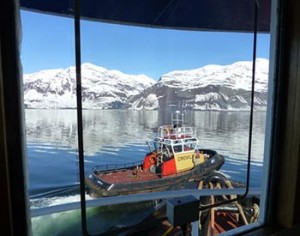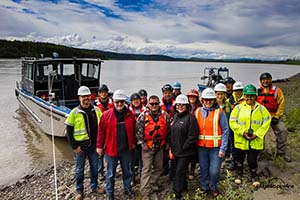
Alyeska’s Valdez Marine Terminal is a unique work environment where hundreds of professionals from dozens of trades perform thousands of various tasks daily. But there is one thing that remains the same every moment at the terminal’s Power Vapor facility. “There’s a constant noise of machinery here 24 hours a day,” said Scott Smith, Utilities Power Vapor Supervisor.
Employees at Power Vapor can work in environments as loud as a 747 jet engine (118 decibels). That level of noise demands safe hearing protection and effective communication tools. After almost 18 years of working in various positions at the Terminal, Smith worried about his team’s hearing protection and communications. When he landed a supervisory position, he stepped up to find a solution.
For implementing safer hearing and communications equipment last fall for the nearly 40 staff working in Power Vapor, Smith and his team were recognized with Alyeska’s 2015 Atigun Award for Health and Safety.

